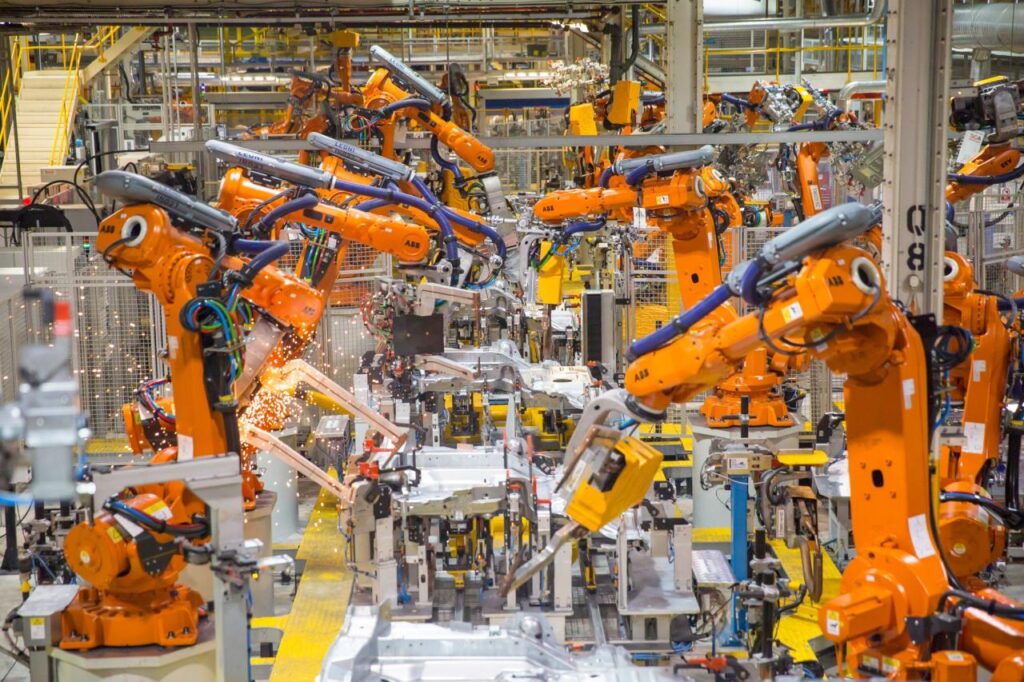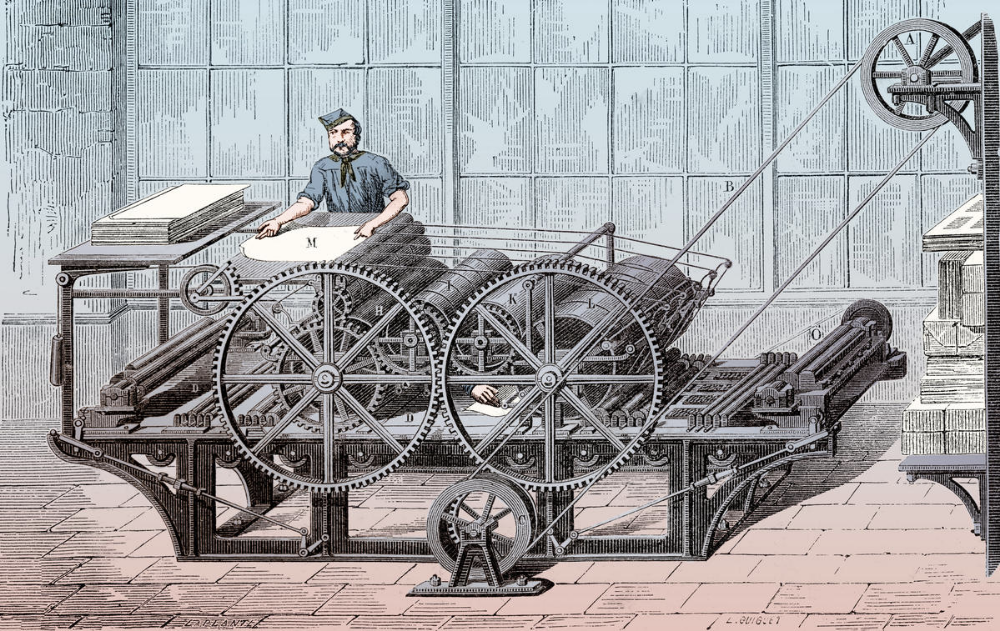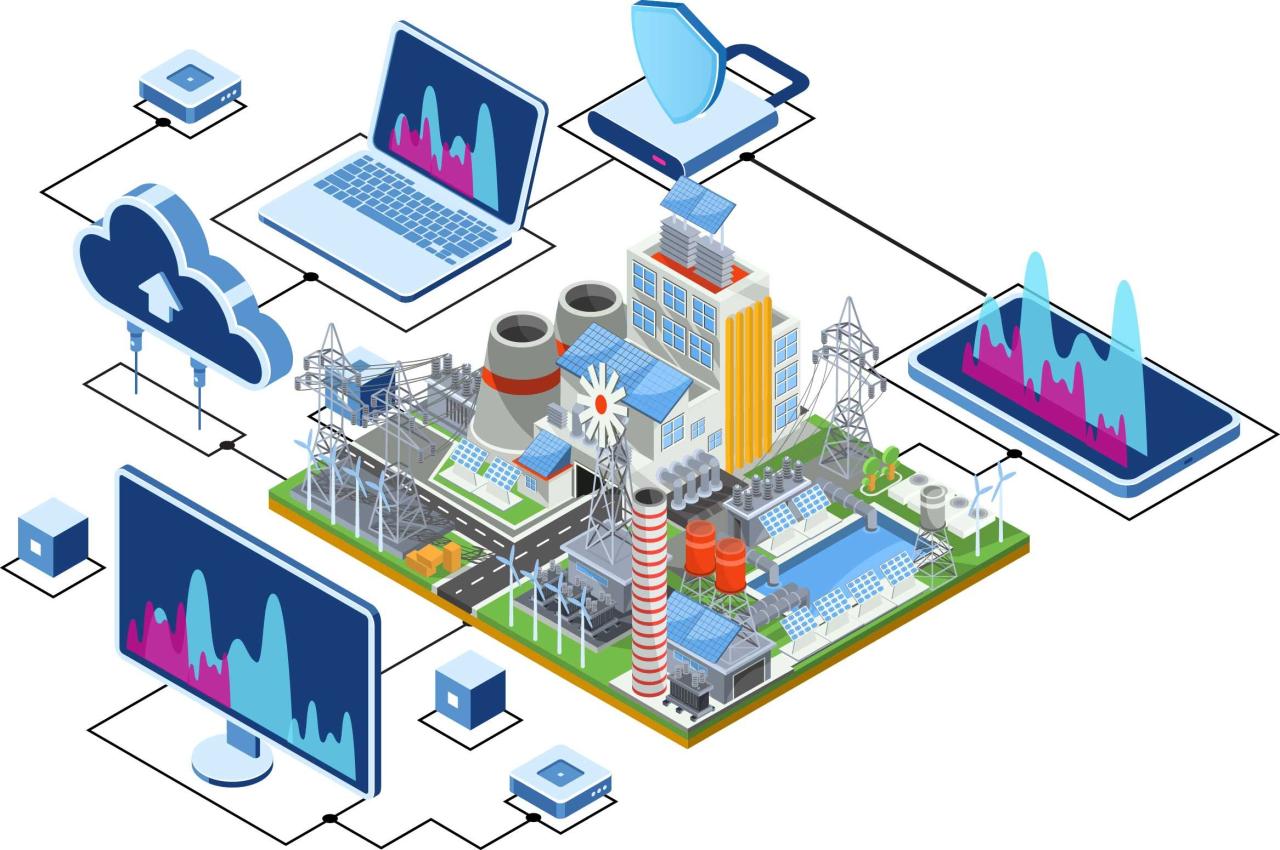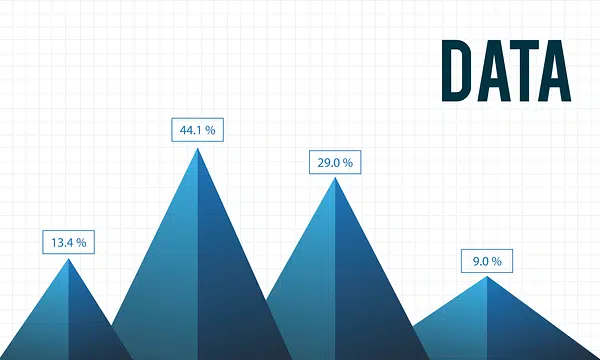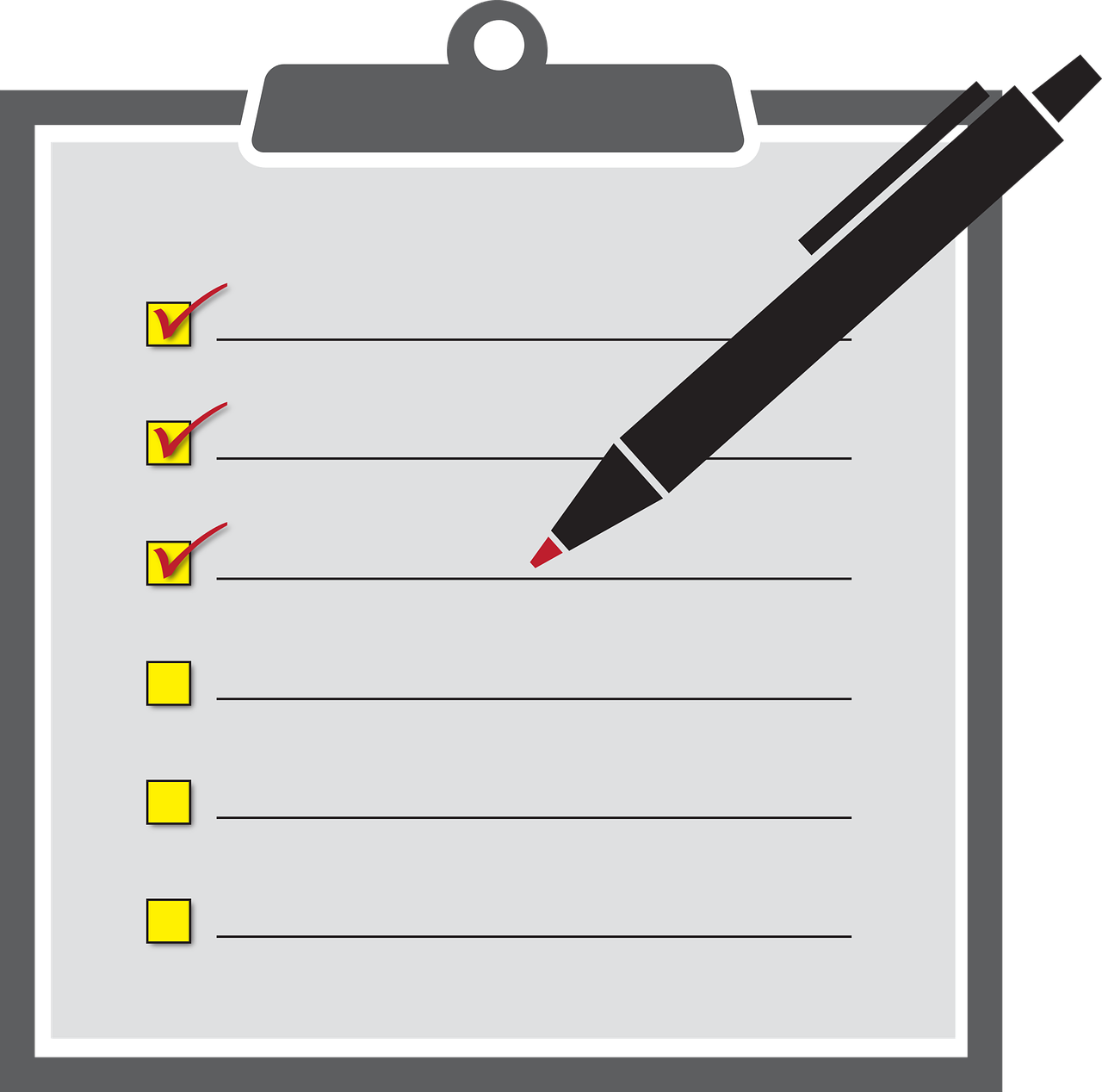In a world increasingly driven by data and digital transformation, the quest for enhanced efficiency has never been more critical. Businesses and individuals alike are constantly seeking innovative ways to achieve more with less, to streamline workflows, and to unlock unprecedented levels of output. At the forefront of this revolution stands AI-powered productivity, a groundbreaking paradigm that leverages artificial intelligence to fundamentally reshape how we work, learn, and create. This isn’t merely about automation; it’s about intelligent augmentation, where AI tools become indispensable partners, acting as new essentials that enhance human capabilities, reduce mundane tasks, and accelerate decision-making, ultimately redefining what it means to be productive in the modern era.
The Evolution of Productivity: From Manual to Intelligent Automation
To fully grasp the profound impact of AI on productivity, it’s crucial to understand the historical trajectory of efficiency tools and the shift from brute-force automation to intelligent, adaptive assistance.
A. The Manual Era: Labor-Intensive Productivity
For centuries, productivity was almost entirely a function of manual labor and sheer human effort. From the invention of the wheel to the early industrial revolution, increasing output meant adding more human hands or rudimentary mechanical aids.
- Physical Labor Dominance: Most tasks, whether in agriculture, manufacturing, or administration, were physically demanding and time-consuming, relying on human muscle and dexterity.
- Basic Tooling: Early tools (e.g., plows, simple machines, quills) amplified human effort but required constant manual operation and decision-making.
- Human Cognitive Load: Every step, every decision, every calculation required direct human cognitive input, leading to bottlenecks, errors, and fatigue.
- Limited Scalability: Increasing output meant linearly increasing the number of workers, which was costly and resource-intensive, with inherent limits to growth.
B. The Rise of Mechanization and Early Automation
The Industrial Revolution ushered in mechanization, replacing human muscle with machine power. The digital age brought about early forms of automation, significantly boosting productivity in repetitive tasks.
- Assembly Lines and Specialization: Factories revolutionized production by breaking down complex tasks into simple, repetitive steps performed by specialized workers and machines.
- Computers and Software: The advent of personal computers and early software applications (e.g., word processors, spreadsheets) automated calculations, data storage, and document creation, freeing knowledge workers from tedious manual tasks.
- Rule-Based Automation: Early automation was largely rule-based and deterministic. If X happens, then do Y. This was efficient for predictable workflows but lacked flexibility for nuanced or changing situations.
- Batch Processing: Many automated processes were designed for batch execution, meaning tasks were collected and processed periodically, rather often than in real-time, leading to delays.
C. AI-Powered Productivity: The Dawn of Intelligent Assistance
The current era, characterized by advancements in artificial intelligence and machine learning, transcends mere automation. AI-powered productivity tools are not just following rules; they are learning, adapting, predicting, and even generating, fundamentally changing the human-computer relationship.
- Cognitive Automation: AI can automate tasks that traditionally required human cognition, such as data analysis, pattern recognition, natural language understanding, and even creative generation.
- Personalization and Adaptation: AI tools can learn from user behavior and preferences, adapting their functionalities to provide highly personalized assistance, making workflows more intuitive and efficient.
- Predictive Capabilities: AI can analyze vast datasets to identify trends and make predictions, enabling proactive decision-making rather than reactive problem-solving. This includes predicting maintenance needs, sales trends, or project risks.
- Generative AI: The emergence of generative AI (e.g., Large Language Models, image generation models) allows machines to create original content—text, images, code—at unprecedented speed and scale, redefining creative and knowledge work.
- Human Augmentation: Rather than replacing humans entirely, AI is increasingly serving as an intelligent co-pilot, augmenting human intelligence and capabilities, allowing individuals to focus on higher-level strategic thinking, creativity, and complex problem-solving.
This profound shift from simply automating processes to intelligently augmenting human capabilities is what truly defines AI-powered productivity, making these tools indispensable in the modern workflow.
Core Principles Defining AI-Powered Productivity Tools
AI-powered productivity tools operate on several fundamental principles that distinguish them from traditional software, leveraging intelligent algorithms to enhance user output.
A. Automation of Repetitive and Mundane Tasks
At its heart, AI-powered productivity aims to eliminate or significantly reduce the burden of repetitive and mundane tasks. These are often high-volume, low-value activities that consume significant human time and attention.
- Data Entry and Categorization: AI can automatically extract information from documents, categorize emails, or populate spreadsheets, reducing manual data entry errors and time.
- Scheduling and Coordination: AI-powered assistants can manage calendars, schedule meetings, find optimal times across multiple participants, and send reminders, freeing up administrative time.
- Routine Communication: AI can draft routine emails, generate summaries of meetings, or respond to frequently asked questions, automating aspects of communication.
- Content Curation and Organization: AI can automatically organize digital files, tag content, or curate relevant information from vast sources, simplifying information retrieval.
By automating these tedious tasks, AI liberates human capital to focus on more complex, creative, and strategic work that truly requires human judgment and problem-solving.
B. Intelligent Data Analysis and Insights Generation
One of AI’s most powerful contributions to productivity is its ability to rapidly analyze massive, complex datasets and extract intelligent insights that would be impossible or impractical for humans to uncover manually.
- Pattern Recognition: AI algorithms excel at identifying subtle patterns, correlations, and anomalies in data, which can reveal inefficiencies, market trends, security threats, or customer behaviors.
- Predictive Analytics: By learning from historical data, AI can predict future outcomes (e.g., sales forecasts, equipment failures, project completion times), enabling proactive decision-making and resource allocation.
- Sentiment Analysis: AI can analyze text data (e.g., customer reviews, social media comments) to gauge sentiment, helping businesses understand public perception or product satisfaction at scale.
- Personalized Recommendations: AI drives recommendation engines across various domains (e.g., content, products, learning paths), guiding users to relevant information or actions, thereby increasing engagement and efficiency.
These insights empower better, faster, and more informed decision-making across all levels of an organization.
C. Enhanced Decision Support and Guidance
AI acts as an intelligent co-pilot, providing decision support and guidance to users, helping them navigate complex choices and optimize outcomes.
- Proactive Suggestions: AI tools can proactively suggest actions, resources, or next steps based on context and past behavior (e.g., suggesting relevant files for an email, proposing meeting agendas).
- Problem Identification: AI can analyze real-time data to detect potential problems or deviations from norms (e.g., a dip in website traffic, an anomaly in financial data) and alert users, often with suggested solutions.
- Optimal Pathfinding: In complex scenarios (e.g., logistics, supply chain management, project scheduling), AI can calculate optimal routes, resource allocations, or task sequences to achieve desired outcomes.
- Risk Assessment: AI can analyze various factors to assess risks (e.g., project risk, cybersecurity risk, financial risk) and provide probability estimates or mitigation strategies.
This intelligent guidance allows users to make better decisions with greater confidence and speed, reducing cognitive overload.
D. Content Generation and Creative Augmentation
The recent explosion of generative AI has fundamentally reshaped how we think about content creation and creative work, moving beyond simple automation to actual generation.
- Text Generation: Large Language Models (LLMs) can draft emails, write articles, generate marketing copy, summarize long documents, or even create entire reports from prompts, significantly accelerating content creation.
- Image and Media Generation: AI can generate realistic images, illustrations, videos, or even 3D models from text descriptions, empowering designers and content creators with unprecedented speed.
- Code Generation: AI assistants can suggest code snippets, complete functions, identify bugs, or even generate entire codebases from natural language descriptions, significantly boosting developer productivity.
- Idea Generation and Brainstorming: AI can act as a brainstorming partner, generating novel ideas, concepts, or solutions based on given parameters, stimulating human creativity.
These capabilities augment human creativity, allowing professionals to focus on refinement, strategic direction, and complex problem-solving rather than rote creation.
E. Personalization and Adaptive Workflows
AI-powered productivity tools are increasingly personalized and adaptive, learning from individual user behavior, preferences, and context to provide a tailored and more efficient experience.
- Customized Interfaces: AI can dynamically reconfigure user interfaces or prioritize information based on individual usage patterns and task requirements.
- Adaptive Learning Paths: In educational or training contexts, AI can create personalized learning paths, identifying knowledge gaps and recommending resources tailored to an individual’s pace and style.
- Contextual Awareness: Tools can leverage context (e.g., time of day, location, current project, recent communications) to anticipate needs and provide relevant suggestions without explicit user input.
- Workflow Optimization: AI can observe how a user works and suggest optimal workflows, shortcuts, or integrations with other tools to enhance efficiency.
This personalization transforms generic tools into intelligent assistants that genuinely understand and anticipate user needs.
Key Applications and Use Cases of AI-Powered Productivity Tools
AI-powered productivity is manifesting across virtually every sector and functional role, transforming specific tasks and entire workflows.
A. Enhancing Communication and Collaboration
AI is making communication more efficient and collaboration more seamless.
- Smart Email Management: AI can filter spam, prioritize important emails, suggest quick replies, summarize long threads, and even draft entire emails based on context.
- Meeting Automation: AI assistants can transcribe meetings in real-time, generate meeting summaries, identify action items, and distribute notes, eliminating manual note-taking.
- Chatbot and Virtual Assistants: Internal chatbots provide instant answers to common employee queries (e.g., HR policies, IT support), reducing reliance on human support staff.
- Language Translation: Real-time translation tools break down language barriers in global teams, facilitating seamless communication.
B. Streamlining Content Creation and Management
From writing to visual design, AI is revolutionizing how content is produced and managed.
- Automated Content Generation: AI writers can generate blog posts, social media updates, product descriptions, and ad copy from simple prompts, accelerating marketing and publishing workflows.
- Image and Video Editing: AI tools can automatically enhance images, remove backgrounds, generate video captions, or even create short video clips from text, simplifying multimedia production.
- Research and Summarization: AI can quickly scan vast amounts of text data (e.g., research papers, news articles) and generate concise summaries or extract key information, aiding researchers and analysts.
- Digital Asset Management: AI can automatically tag, categorize, and organize digital assets (images, videos, documents) based on their content, making them easily searchable and retrievable.
C. Revolutionizing Data Analysis and Business Intelligence
AI is transforming raw data into actionable insights, enabling smarter business decisions.
- Automated Reporting: AI can generate business reports from various data sources, identifying key trends, anomalies, and performance indicators without manual aggregation.
- Predictive Sales and Marketing: AI models forecast sales, identify promising leads, segment customer bases, and optimize ad spend, leading to more effective marketing campaigns.
- Financial Forecasting: AI can analyze financial data to predict market trends, assess investment risks, and automate aspects of financial planning and auditing.
- Operational Optimization: AI in logistics optimizes delivery routes, in manufacturing predicts equipment failures (predictive maintenance), and in energy management optimizes consumption, leading to significant cost savings and efficiency gains.
D. Boosting Software Development and Engineering
Developers are increasingly leveraging AI to write, test, and deploy code more efficiently.
- Code Completion and Generation: AI-powered IDE extensions (e.g., GitHub Copilot) suggest code snippets, complete functions, and even generate entire blocks of code from natural language comments, accelerating coding.
- Bug Detection and Fixing: AI tools can analyze code for potential bugs, security vulnerabilities, and performance issues, often suggesting fixes or automatically correcting errors.
- Test Case Generation: AI can generate comprehensive test cases based on code logic and past bug patterns, improving software quality and reducing testing time.
- DevOps Automation: AI can optimize CI/CD pipelines, predict deployment risks, and automate incident response, enhancing the reliability and speed of software delivery.
E. Transforming Personal Productivity and Learning
AI is not just for enterprises; it’s empowering individuals in their daily tasks and learning journeys.
- Smart Assistants: Personal AI assistants (e.g., ChatGPT, Bard, Claude) can help with brainstorming, writing, research, and organizing information.
- Adaptive Learning Platforms: AI tailors educational content and exercises to individual learning styles and paces, identifying knowledge gaps and providing personalized feedback.
- Health and Wellness Trackers: AI-powered wearables and apps monitor health metrics, analyze sleep patterns, suggest exercise routines, and provide personalized wellness advice.
- Task Prioritization: AI can analyze your workload, deadlines, and preferences to suggest optimal task prioritization and scheduling, helping you manage your time more effectively.
Overcoming Challenges in AI-Powered Productivity Adoption
Despite its immense promise, the widespread integration of AI into productivity workflows presents several challenges that organizations and individuals must proactively address.
A. Data Privacy, Security, and Governance Concerns
AI systems, particularly those powered by large language models, often require access to vast amounts of data, including sensitive business or personal information. This raises significant concerns about data privacy, security, and proper governance.
- Data Leakage Risks: Using public AI tools with confidential data can lead to inadvertent data leakage.
- Bias in Training Data: AI models trained on biased datasets can perpetuate or amplify existing societal biases, leading to unfair or discriminatory outcomes in decision-making or content generation.
- Regulatory Compliance: Navigating evolving data protection regulations (e.g., GDPR, CCPA) while leveraging AI tools requires robust data governance policies and technical safeguards.
- Intellectual Property Rights: The use of generative AI for content creation raises complex questions about originality, copyright, and ownership of the AI-generated output, as well as the source data used for training.
Organizations must implement strict data handling policies, choose enterprise-grade AI solutions, and ensure transparency in AI’s data usage.
B. Ensuring Accuracy, Reliability, and ‘Hallucinations’
AI models, especially generative ones, can sometimes produce incorrect, nonsensical, or entirely fabricated information, often referred to as ‘hallucinations’. Relying solely on AI output without human verification can lead to serious errors.
- Fact-Checking Necessity: All AI-generated content or insights, particularly for critical applications, must undergo rigorous human fact-checking and validation.
- Model Limitations: Users need to understand the inherent limitations of AI models, recognizing that they are probabilistic tools and not infallible sources of truth.
- Debugging AI: Explaining why an AI model made a particular decision (interpretability/explainability) can be challenging, making it harder to debug issues or build trust.
Designing workflows where AI is a powerful assistant but human oversight is the final arbiter is crucial for reliability.
C. Integration Complexity and Siloed Systems
While many AI tools are standalone, integrating them seamlessly into existing enterprise systems and workflows can be complex.
- API Integration: Connecting AI services to legacy systems or disparate applications often requires custom API development and significant engineering effort.
- Data Silos: Data trapped in disparate systems can prevent AI from accessing a comprehensive view necessary for optimal performance, limiting its insights.
- Scalability of AI Infrastructure: Deploying and managing AI models at scale requires specialized infrastructure (e.g., GPUs), MLOps practices, and expertise that many organizations may lack.
A strategic approach to data architecture and API-first design is essential for effective AI integration.
D. Workforce Adaptation and Skill Gap
The rapid adoption of AI-powered tools necessitates a significant adaptation from the workforce.
- New Skill Requirements: Employees need to develop new skills in ‘prompt engineering’ (effectively communicating with AI), AI literacy, critical evaluation of AI output, and understanding how to collaborate with AI.
- Resistance to Change: Some employees may resist adopting AI tools due to fear of job displacement, lack of understanding, or discomfort with new technologies.
- Training and Upskilling: Organizations must invest heavily in training and upskilling programs to prepare their workforce for AI-augmented roles, transforming job descriptions and career paths.
Fostering a culture of continuous learning and embracing human-AI collaboration is key to overcoming this.
E. Cost Management and ROI Justification
While AI promises productivity gains, the costs associated with advanced AI infrastructure, model training, and specialized talent can be substantial.
- Resource Consumption: Training and running large AI models can consume significant computational resources (e.g., GPU hours), leading to high cloud costs.
- Talent Acquisition: Hiring or training AI specialists (data scientists, ML engineers) can be expensive due to high demand.
- Measuring ROI: Quantifying the direct return on investment for AI-powered productivity initiatives can be challenging, especially for qualitative improvements like ‘better decision-making’ or ‘enhanced creativity’.
Organizations need clear strategies for cost optimization and robust metrics to justify AI investments.
Best Practices for Maximizing AI-Powered Productivity
To effectively harness the power of AI for productivity and mitigate potential challenges, organizations should adopt a strategic and iterative approach, focusing on thoughtful implementation and continuous adaptation.
A. Start with High-Impact, Low-Risk Use Cases
Don’t try to automate everything at once. Begin by identifying high-impact, low-risk use cases where AI can provide immediate, tangible productivity gains without disrupting core operations. Examples include automating routine data entry, generating first drafts of simple documents, or summarizing long reports. This allows teams to gain experience, build confidence, and demonstrate early ROI.
B. Emphasize Human-AI Collaboration
Position AI as an intelligent assistant or co-pilot, not a complete replacement. Design workflows that foster seamless human-AI collaboration, where AI handles the repetitive, data-intensive, or generative aspects, and humans provide strategic oversight, critical judgment, creative direction, and ethical reasoning. This symbiotic relationship maximizes both efficiency and quality.
C. Invest in AI Literacy and Workforce Upskilling
Acknowledge that AI adoption requires a new skill set. Implement comprehensive AI literacy and upskilling programs across the organization. Train employees on how to effectively use AI tools (e.g., prompt engineering), understand their capabilities and limitations, critically evaluate AI outputs, and adapt to AI-augmented roles. This proactive approach alleviates fear and empowers the workforce.
D. Prioritize Data Governance, Security, and Ethics
Before deploying AI, establish robust data governance frameworks to ensure data quality, privacy, and security. Implement strict access controls for AI models and the data they consume. Develop and enforce ethical AI guidelines covering fairness, transparency, and accountability to prevent bias and ensure responsible use. Regularly audit AI systems for compliance and unintended consequences.
E. Integrate AI Tools into Existing Workflows Incrementally
Aim for seamless integration of AI tools into your existing enterprise systems and daily workflows. Prefer AI solutions with robust APIs and integrate them incrementally into your current software stack rather than adopting disparate, standalone tools. This reduces disruption, improves user adoption, and maximizes the value AI can derive from existing data sources.
F. Measure, Monitor, and Iterate Continuously
AI-powered productivity is an iterative journey. Establish clear metrics to measure the impact of AI tools on productivity (e.g., time saved, error reduction, task completion rates). Continuously monitor AI system performance, identify areas for improvement, and iterate on configurations, prompts, and integrations based on real-world usage data. Adopt an MLOps approach for managing AI models through their lifecycle.
G. Create a Culture of Experimentation and Learning
Foster an organizational culture that encourages experimentation and continuous learning with AI. Create sandboxes or safe environments for teams to explore new AI tools and apply them to their specific challenges. Share successes and learnings across the organization. This agile approach enables rapid adaptation to new AI advancements and promotes innovative problem-solving.
H. Understand AI Model Limitations and Context
Educate users on the inherent limitations of AI models, especially generative AI. Emphasize that while powerful, these tools can ‘hallucinate’ or produce plausible-sounding but incorrect information. Users must apply their domain expertise and critical thinking to validate AI outputs, especially for sensitive or high-stakes tasks. Always provide the necessary context for AI to perform optimally.
I. Plan for Scalability and Infrastructure Needs
As AI adoption grows, so will the demand for computational resources. Plan for the scalability of your AI infrastructure, whether leveraging cloud-based AI services or managing on-premise GPU clusters. Design for efficient data pipelines and model deployment to ensure that AI tools can handle increasing workloads without becoming bottlenecks to productivity.
J. Leverage Vendor Expertise and Community Resources
The AI landscape is vast and rapidly changing. Don’t hesitate to leverage the expertise of AI tool vendors and engage with the broader AI and productivity community. Participate in forums, attend webinars, and learn from case studies. This external knowledge can accelerate your adoption, provide insights into best practices, and help you stay ahead of emerging trends.
The Future Trajectory of AI-Powered Productivity
The current capabilities of AI-powered productivity are just the beginning. The future promises even more sophisticated, integrated, and pervasive AI tools that will further redefine the nature of work.
A. Hyper-Personalized Digital Assistants
Future AI assistants will move beyond generic responses to become truly hyper-personalized digital co-pilots. They will possess a deep understanding of individual user preferences, work styles, cognitive biases, and even emotional states, offering highly contextualized suggestions and automating tasks with minimal explicit instruction. These assistants will proactively manage schedules, prioritize tasks, and even anticipate information needs before users articulate them.
B. Autonomous Agents and AI Workflows
The concept of single AI tools will evolve into autonomous AI agents capable of initiating and completing multi-step, complex workflows independently. These agents will be able to interact with various applications, gather information from multiple sources, make decisions, and execute tasks without constant human oversight. For example, an AI agent could manage an entire marketing campaign from content creation to scheduling and performance analysis.
C. AI-Native Operating Systems and Interfaces
We might see the emergence of AI-native operating systems or user interfaces where AI is not just an application but an embedded layer that orchestrates all digital interactions. Imagine an OS that automatically organizes your files, prioritizes your notifications, summarizes your communications, and proactively fetches relevant information based on your current task, all without you having to open separate apps.
D. Enhanced Human-AI Collaboration and ‘Centaur’ Productivity
The focus will increasingly be on creating powerful ‘Centaur’ systems, where the combined intelligence of humans and AI far surpasses either working alone. AI will become a seamless extension of human intellect, offering unparalleled computational power, memory, and analytical capabilities, allowing humans to focus on intuition, empathy, high-level strategy, and truly creative breakthroughs. This will lead to new forms of expertise and problem-solving.
E. Ethical AI and Trust by Design
As AI becomes more integrated into critical workflows, the emphasis on ethical AI and ‘trust by design’ will intensify. Future AI tools will incorporate stronger mechanisms for transparency, explainability, fairness, and robust security. Regulations will mature, and certifications for ethical AI development will become standard, building greater public trust and ensuring responsible adoption.
F. AI-Driven Workforce Optimization and Reskilling Platforms
AI itself will be used to optimize workforce management and accelerate skill development. AI-powered platforms will identify skill gaps, recommend personalized training paths, match employees to ideal projects, and even design new job roles that maximize human-AI synergy. This will be crucial for navigating the evolving job market landscape.
Conclusion
AI-powered productivity is not a fleeting trend but a fundamental, irreversible shift in the way we approach work and efficiency. By intelligently automating repetitive tasks, generating profound insights from data, providing astute decision support, and augmenting human creativity, AI tools are rapidly becoming the new essentials for individuals and organizations striving for peak performance. They are reshaping job roles, flattening organizational hierarchies, and accelerating the pace of innovation across every sector.
While the journey towards full AI integration presents challenges—from data privacy and ethical considerations to skill adaptation and integration complexity—the overwhelming benefits in terms of speed, accuracy, and strategic advantage make this transformation imperative. By adopting a thoughtful, incremental, and human-centric approach, embracing continuous learning, and prioritizing responsible AI practices, businesses can unlock the unparalleled potential of intelligent automation. The future of productivity is a synergistic dance between human ingenuity and artificial intelligence, leading us into an era of unprecedented achievement and continuous innovation.

